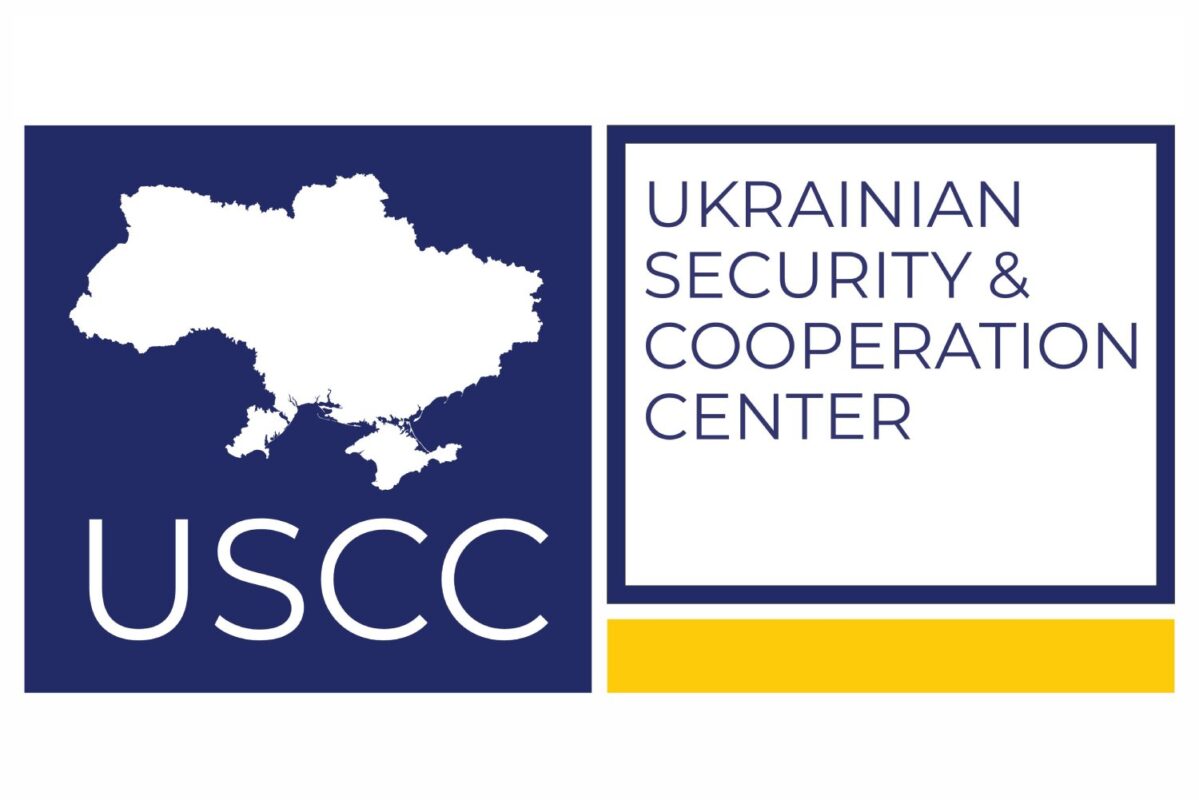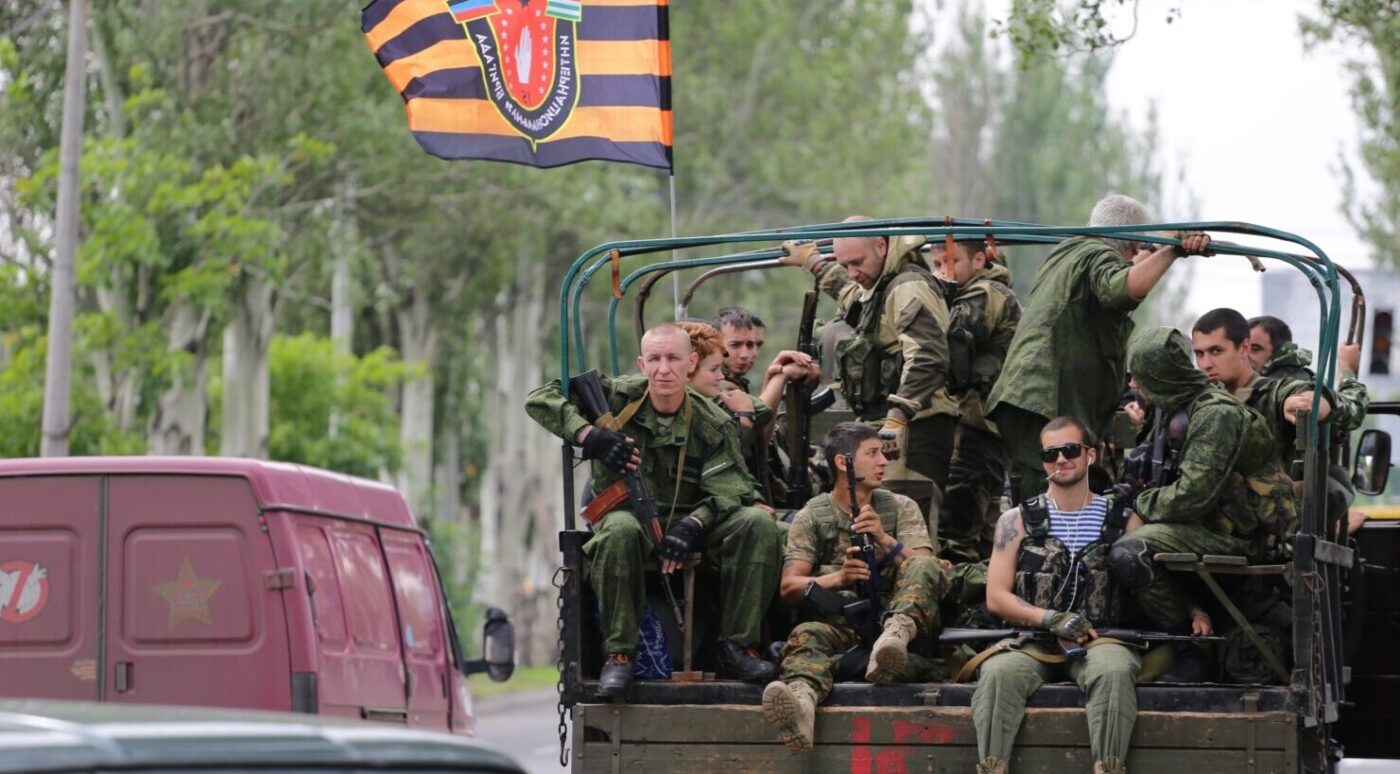Recruitment for military service in the so-called 1st and 2nd Army Corps is underway in the parts of Luhansk and Donetsk regions temporarily occupied by Russia.
In particular, sources of the Ukrainian Security and Cooperation Center (USCC) in the Ukrainian special services report that advertisements were distributed on the territory of the so-called “LPR” urging to join the so-called military service in the units of the 2nd Army Corps, with the promised financial support of 24 thousand rubles (approximately 8700 hryvnias) and an additional allowance. Residents aged 18 and older are recruited on a contract basis to the units of counter-battery radar stations and air defense.
As Chief of the Main Intelligence Directorate of the Ministry of Defense of Ukraine (Defense Intelligence of Ukraine, DIU) Kyrylo Budanov said in an interview with the USCC: “Russia had been preparing and is further preparing for a serious annexation of Ukraine”.
The words of the Ukrainian intelligence chief are confirmed by the facts. As of early November, Russia has concentrated a group of troops numbering about 90 thousand people near the Ukrainian border and in the temporarily occupied territories.
In August-October 2021 alone, the Armed Forces, the OSCE Mission, and ordinary citizens recorded redeployment of military equipment and ammunition from the territory of Russia, while the occupation authorities conducted extensive reserve training in addition to conscription.
Redeployment of equipment and restrictions to the work of the OSCE Mission
Between 9 and 15 August 2021, the OSCE Mission recorded the deployment of 419 weapons and military equipment in the temporarily occupied territories, including 45 in violation of the withdrawal line, 179 outside the designated storage areas, and 195 in the security zone.
The OSCE also reports almost daily on restrictions to the Mission’s freedom of movement, particularly at militants’ checkpoints, and reports that SMM’s UAVs are affected by GPS interference. This fact once again shows that the occupation forces have something to hide from international observers.
– Local residents recorded a video of a large convoy of military equipment moving in the Donetsk area (August 15): https://twitter.com/hochu_dodomu/status/1426897580626219010
– On August 28, citizens also recorded a column of military equipment in Donetsk and posted it on social media. https://twitter.com/tiamat007/status/1432738343645745154, https://t.me/donetch/6336
All these activities “coincided” with the shelling of Avdiivka, in particular, the civilian infrastructure of the city located near the delimitation line. As a result of shelling, 8 Ukrainian servicemen were wounded, and Ukrzaliznytsia was forced to stop the movement of trains in this direction.
https://t.me/donetch/6330 https://t.me/donetch/6331?single
On August 30, Ukrainian intelligence reported that since the beginning of August, Russia had brought through temporarily uncontrolled areas of the Ukrainian border:
– armored vehicles repaired at the enterprises of the Russian Federation;
– more than 6 thousand tons of fuel;
– anti-tank guided missiles;
– anti-tank and anti-personnel mines;
– sniper systems;
– ammunition for large-caliber machine guns and sniper rifles.
On August 31, social media users wrote en masse about the shelling of the positions of Ukrainian troops in Pisky and Krasnohorivka carried out from Donetsk:
On September 3, the DIU reported that the militants under the command of the Russian Armed Forces had rotated forward units, as well as carried out joint combat training and tactical exercises on adjusting artillery fire using UAVs.
All these actions take place against the background of an important statement that after September 30, Russia will not support the continuation of the OSCE mission at the Donetsk and Gukovo checkpoints on the Russian-Ukrainian border. Therefore, since October 1, there are no more international observers at these points.
On September 23, a post was published in the VK group “Summaries from the militia of Novorossiya” with a video of columns of Russian military equipment, allegedly moving from the Rostov region towards the Ukrainian Berdyansk and Mariupol. The message states that they are “fully staffed with personnel, military equipment and ammunition and are ready for combat deployment and a powerful offensive!”. It is unknown whether the video is true and what its aim is. Usually, propaganda channels do not cover the movement of Russian equipment to the Ukrainian border.
On October 1, Ukrainian intelligence reported that during September Russia’s Armed Forces Command transferred to the occupied areas of the East the following: more than 5 000 tons of fuel, new batches of weapons and ammunition (including anti-tank guided missiles), shells for anti-tank missile systems, anti-tank and anti-personnel mines, ammunition for large-caliber machine guns and sniper rifles. A significant part of the combat vehicles, restored and modernized in Russia, was returned to the occupation forces.
Also, despite the completion of the “Zapad-2021” exercise, the Ukrainian command does not record the mass return of battalion tactical groups of the Russian army to their permanent stations.
According to the Commander-in-Chief of the Armed Forces of Ukraine Valeriy Zaluzhny, they continue to perform tasks in the Southern Military District of the Russian Federation, staying in areas close to the state border of Ukraine.
On October 13, the Armed Forces of Ukraine detained an armed member of the Russian armed forces. Russian citizen Andriy Kosyak, born in 1978, was reconnoitering Ukrainian positions under the guise of demining operations and with a JCCC armband.
On October 15, militants responded by blocking the work of the OSCE mission in Donetsk, and on October 17-18, patrols from the base in occupied Horlivka were blocked.
The blocking of the OSCE’s work in the occupied part of Ukraine was condemned by OSCE PA Special Representative for Eastern Europe Daniela De Ridder (Germany).
On the evening of October 23, the OSCE mission in Donetsk was finally unblocked.
Mobilization
From August 23 to 27, in pursuance of the order of the head of the LPR terrorist organization, a large-scale reservist training was held, with 3 500 people and 252 units of equipment having participated.
Also, according to the DIU, during the same week, the command of the Armed Forces of the Russian Federation organized training for the units of the 1st and 2nd Army Corps of the Russian occupation forces. These measures were supervised by commissions of the 8th Army of the Southern Military District of Russia’s Armed Forces.
On September 1, a message appeared on social media about the forced recruitment of men from occupied Alchevsk by the so-called “LPR”. New reservist trainings are also planned in the “republic” in late September and early October.
On September 10, the head of the so-called “DPR” called for mobilization “under martial law” from October 1 to December 31, 2021, due to the “growing aggression by Ukraine”. The call applies to citizens born in 1994-2003 who are not in reserve.
Ukrainian intelligence also recorded an increase in propaganda groups and advertisement of contract military service for the occupiers.
Social networks claim that there is a serious lack of staff in the armies of the “republics” because locals don’t want to fight. Due to this, people with a criminal past and alcohol or drug addiction are recruited. Even Russian propagandist bloggers claim the problem of serious shortages, troubles with food and the moral and psychological condition of the militants. On October 17, information appeared on social networks that 34 deminers from Dagestan had been sent to the DPR army, all of them being servicemen of the Russian Armed Forces.
Since October 22, the deployment of field control points and field camps for conscripts for the so-called winter military field training has started in the temporarily occupied territory. This was reported by the DIU. According to the information, even students are planned to be involved in the six-month training, and they are threatened with imprisonment for up to six years for evading conscription.
Meanwhile, the Russian command is trying to forcibly keep in the army those people whose contract is expiring.
At the same time, it is clear that Russia will further use the issue of so-called “republics” to put pressure on both domestic and geopolitical levers.
After the election to the State Duma of the Russian Federation, which slightly diverted the attention of the Kremlin media to internal issues (all for the sake of lifting the falling rating of the pro-government United Russia party), the issue of Ukraine again appeared in all top propaganda shows.
Russian propaganda was particularly desperate about Ukraine’s use of the Bayraktar TB2 reconnaissance and strike drone in response to shelling of Ukrainian positions, the capture of a Russian citizen, an officer of the so-called “LPR”, and statements by Ukrainian army commanders about their readiness to respond to Russian aggression.
Given the problems with the mobilization of local residents to the so-called “people’s militia” and other internal problems that were previously observed in the 1st and 2nd Army Corps, the confident statements and actions of the Ukrainian military can only exacerbate this crisis in the troops of the “republics”.
This will mean that Russia will have to take steps to increase support for the occupation forces.
Probably one of such attempts to raise the militants’ morale and check the reaction of Ukrainian citizens (both in the occupied and not in the occupied part) is information about the alleged redeployment of large columns of Russian military equipment to the Ukrainian border.
Video with such content was spread on social media in late October and sparked an outcry in foreign media particularly.
However, Ukrainian intelligence has already called this information an element of special information-psychological activities, which are essentially planned measures within the framework of the movement of troops after the completion of exercises and redeployments.
Hybrid war in action.
Photo by TASS
Author: Oksana Kuzan

